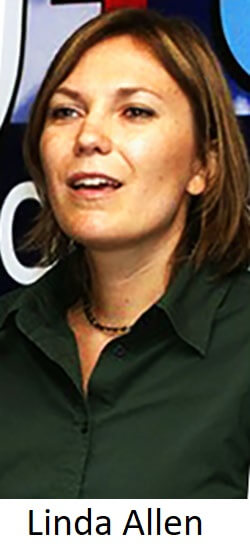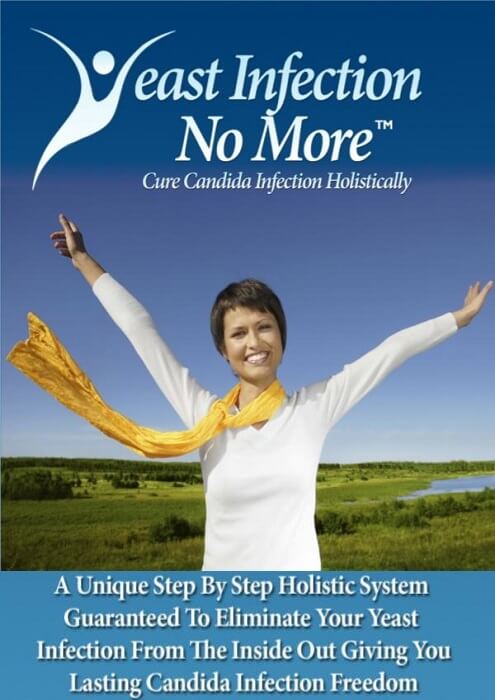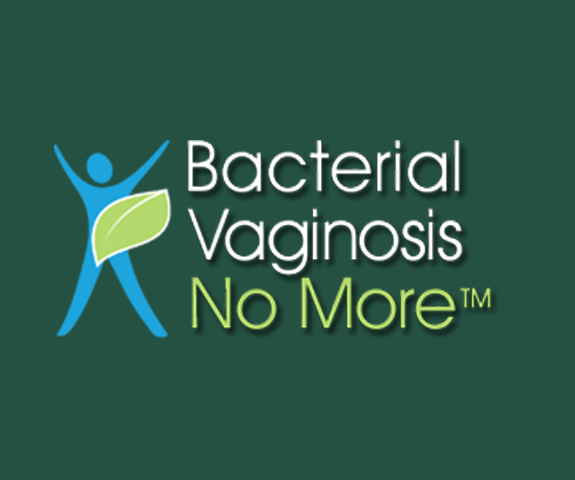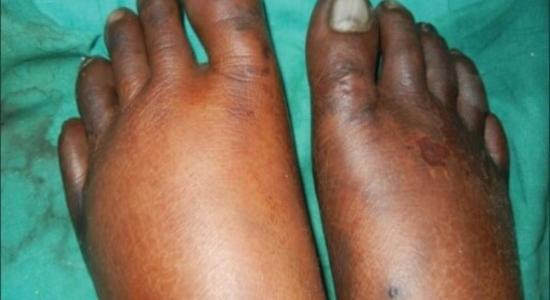See all "Answers" Section Topics

So, why do you keep getting yeast infections? There are likely some key root causes to this problem. One of the primary reasons women keep having yeast infections, is due to the presence of Candida (the genus of yeast responsible for infections) in their digestive system. When yeast overgrow in the intestines, they migrate from the anus to the vagina; the result is reinfection with yeast, and another vaginal flare up. Another possible reason you keep getting yeast infections, is due to an imbalance in the good probiotic bacteria that normally dominate a healthy woman's vagina. These bacteria can help reduce vaginal sugar, maintain vaginal acidity, and block yeast cells from attaching to the vaginal epithelium (tissue forming the outer layer of a body’s surface; such as those lining the intestines and vagina).
As research indicates, millions of women around the world suffer from this same problem. So, don’t think you're a unique case; this problem is quite ubiquitous. Most women who have this health issue, are in their reproductive years—and age cannot be changed. However, there are some things you can change. Some risk factors, that cause you to start having recurrent Candida problems, you can change include antibiotic use, receiving oral sex, wearing tight clothing, taking estrogen rich drugs, or using an immunosuppressive drug. By addressing some of the risk factors (which we will discuss more in depth later on) you can effectively lower your predisposition towards Candidiasis.
One woman also had repeated yeast infections; and, this ruined her life for over a decade. This woman also learned how to address the underlying physiological issues that gave her repeat yeast infections. Using her techniques, you can totally eliminate repeat yeast infections. We will talk more about this at the close of this article.
A 1/2 Day & Yeast is Gone!
Linda Allen suffered from yeast infections for years. Through researching natural medicine & Candida, she found an efficacious solution!
Linda is one expert you want on your side! Let her show you how to get rid of a superficial yeast infection in just 12 hours; AND, keep it gone!
A 60-day, 100% money back guarantee is provided.
Visit Official Site!Candida Recurrence Research

The first study we will address, dealt with recurrent vaginal Candidiasis, and was published in the American Journal of Obstetrics and Gynecology [214.1 (2016): 15-21]. The study reported, that it is estimated recurrent vaginal yeast infections affect approximately 138 million women annually worldwide. During the course of all women’s lifetimes, about 492 million will suffer from recurrent vaginal Candidiasis. Concerning how long these episodes of recurrent yeast related vaginitis will last, the study reports the duration of this malady can often be 1 to 2 years; however, a substantial amount of women will have symptoms for 4 to 5 years—and possibly much longer. Some women have symptoms that last for decades.
The study also describes the species of Candida that are the causative factor in women who keep getting yeast infections. The study states that Candida albicans is the leading species responsible for repeat yeast infections. Somewhere around 85% to 95% of women, with repeat yeast infections, have this condition caused by Candida albicans. Concerning sporadic episodes that are not recurrent, it is speculated that over 90% of these attacks are caused by Candida albicans. Regarding non-albicans species infections, Candida glabrata is the most frequently recovered species from symptomatic and asymptomatic women.
Concerning the symptoms of a yeast infection, it is often difficult to diagnose this problem via symptoms alone; as there are a host of other causes of vaginitis. The study relates that vaginal redness, fissures (small cuts), vaginal sores (where the skin has eroded away), and vaginal swelling are all hallmark symptoms of this problem. Another sign of a yeast infection is a classic cottage cheese discharge that does not have much odor—or no smell at all. The study also states, that severe yeast infections also can affect a woman’s quality of life; and, some may experience depression and anxiety. The study concludes by stating, at the time of its writing, there were still substantial gaps in the understanding of recurrent vaginal Candidiasis.

The next study also looked at women who keep getting yeast infections; and, was published in the journal Drugs [63.11 (2003): 1059-1066]. The study reported the cause of recurrent vaginal Candidiasis may be related to a variety of host (the person who gets the infection) or microbiological problems (such as a lack of appropriate Lactobacillus probiotic bacteria in the vagina). Some host factors include: diabetes, use of antibiotics, the presence of some immunosuppressive disease (such as HIV), the use of immunosuppressive drugs (like corticosteroids), or the use of estrogen based drugs (such as estrogen birth control pills, hormone replacement therapies, or the topical application of estrogen based products). Also, the research relates that drug resistant strains of Candida may also be responsible for recurrent attacks. Drug resistance is a real possibility; and, often this can result in persistent outbreaks.
The study does not address the potent natural antifungals or natural approaches to dealing with recurrent vaginal Candidiasis. It states that many women with recurrent yeast infections may need to have years of constant synthetic prescription antifungal use to, hopefully, stop their problem. And, the research relates that a core group of these women, with a hard to pin down cause for their Candida problems, will not ever be able to get better using prescription antifungals. Even the simultaneous use of vaginal antifungals and oral antifungal pills will only be able to help maintain the health of one of these women who has become the victim of Candida. The study states, Candida that has become resistant to prescription antifungals, is usually assumed to be the cause of a woman not responding to treatment, or the persistence of a yeast infection despite therapy. Fortunately, what was not addressed by this study, is the fact many natural herbs and plant oils powerfully kill off—even the most entrenched—antifungal resistant yeast infections.
Risk Factors for Recurrent Vaginal Candidiasis

The next study we will address, attempted to define some of the characteristics of women who kept getting yeast infections. The study was published in Acta Obstetricia et Gynecologica Scandinavica [81.11 (2002): 1047-1052]. The study stated about 5% to 8% of women will suffer from recurrent yeast infections; most often occurring during their reproductive years. Apparently, only in only a small portion of occurrences of this condition, have factors been associated with it. These factors include the use of powerful antibiotics, uncontrolled diabetes, the use of contraceptives, and pregnancy.
According to the study, diagnosing yeast infections can often be difficult—even for practiced medical professionals. The study cites research that found only 28% of 554 women, who complained of symptoms consistent with a vaginal yeast infections, had Candida able to be cultured from their genital tracts.
The study tried to identify 16 different genital signs and 32 causal factors in 83 women with a history in-line with typical recurrent vaginal yeast infections. These women all had Candida cells present in their vaginas—as determined by laboratory analysis—at least once. Some women had Candida positive laboratory findings more than once. The study stated, that there is an obvious age specific physiological influence of sex hormones on the rate at which a woman will keep getting a yeast infection; which includes the hormonal fluctuations during pregnancy. The study found that only two factors differed significantly in the group of women negative for Candida and the group of women positive for Candida. The primary factor found was eating yogurt; 68% of the women with Candida had eaten yogurt, and 95% of the women without Candida had eaten yogurt. Thus, taking in a yogurt, with live probiotic cultures, may help reduce the recurrence of this condition.
Another study tried to ascertain the risk factors that could predispose women to keep having yeast infections. The research was published in the American Journal of Public Health [80.3 (1990): 329-331]. The study looked at stress, sexual behavior, diet, and personal hygiene to see if these factors could pose any risk to vaginal Candidiasis. Of the women in the study, 85 who were diagnosed with vaginal yeast infections, served as the case group. The controls were two groups; one of 1,245 students using health services, and 113 subjects selected from the student population. The study found that frequent sexual intercourse (seven or more times in a week compared to none) was the strongest risk factor for repeat infections. Other suggested risk factors included: wearing synthetic underwear, use of feminine hygiene sprays, wearing tight clothing, and diet. However, the study stated, most women who keep getting yeast infections tend to avoid all of these risk factors except for sexual intercourse.
The study seemed to leave out a differentiation between a woman receiving oral sex, and regular sexual intercourse. Many studies have shown frequent intercouse is not a risk factor for yeast infections, but do show a women receiving oral sex as a strong risk factor. The study’s charts showing risk factors, do not distinguish between receptive oral sex and intercourse; thus, it is likely the true cause for the conclusion, is that during sex, these women also receive oral sex (for more comprehensive information on this topic, you can check out: Sex and Yeast Infection).

An academic paper, published in the Clinical Microbiology Newsletter [28.12 (2006): 93-95], also discussed women who keep getting yeast infections, and some of the risk factors associated with this health malady. The study stated, that Candida albicans is the primary species causing recurrent vaginal yeast infections. This health condition tends to affect a significant portion of women who are in their childbearing years. Yeast cells get into the vaginal canal primarily by moving there from the rectum. Candida can exist in the vagina as a harmless commensal organism, but it can become pathogenic. The study has the following to say regarding an intestinal reservoir of Candida:
Candida species thrive in the large intestine and are prevalent in the rectal ampulla. From there, they migrate to the external anal orifice during defecation, and they become established as colonies in the perianal area, which facilitates spread of the microorganism to the vagina.
http://dx.doi.org/10.1016/j.clinmicnews.2006.05.004
The study cites, a large buildup of Candida in the rectal ampulla (where feces is stored before its release via the anal canal), can lead to colonization of the anal sphincter as waste is eliminated. From there, the yeast cells migrate to the perianal region, and eventually the vagina. The study concluded by stating that effective treatment for this condition requires properly diagnosing it. They did suggest going on long term courses of prescription antifungals to allay this problem; however, it was noted that discontinuation of such antifungal regimens, often results in quick relapse.

The research also made clear, that five factors have been demonstrated to contribute to the acquiring of recurrent yeast infections and the chronicity of vaginal Candida attacks. These five factors are: an intestinal reservoir of yeast, sexual activity, persistence of the same vaginal Candida strain, an acquired acute hypersensitivity reaction (which is a harmful immune response to some type of foreign body—known as an antigen), and reduced protective vaginal factors. The acquired acute hypersensitivity reaction occurs when the body responds inappropriately to Candida antigens. And, according to this research, a few studies on Candida antigen desensitization have demonstrated a lowered rate of symptomatic relapses. Reduced protective vaginal factors included the loss of vaginal L. acidophilus bacteria.
This study rudely stated, that L. acidophilus does not produce lactic acid or peroxide—which is a totally erroneous statement. Just take a look at our section on acidophilus yeast infection treatment and you will see plenty of research that outright proves this is a blatant error. Also you can take a look at the study Production of Hydrogen Peroxide by L. acidophilus, which directly states in its abstract, that L. acidophilus does produce hydrogen peroxide (and H202 is a peroxide; the simplest of all peroxides).
Also, the following risk factors were identified by the study:
- A short distance between the anus and vagina
- Use of antibiotics
- Pregnancy
- Wearing synthetic or tight fitting clothing
- Oral contraceptive use
- Being overweight
- The human immunodeficiency virus (HIV)
- Having diabetes mellitus
- Changes in the immune system performance
Eliminate Bacterial Vaginosis & Vaginal Odor
Jennifer O’Brien is one prominent expert on BV that knows how to get rid of vaginal odor. BV is a common infection that you don’t have to put up with.
Jennifer will show you how to naturally eliminate vaginal odor in just 3 days.
A 60-day, 100% money back guarantee is provided.
Visit Official Site!Natural Candida Remedies

Often, as the research previously stated, the reservoir of Candida in the gut is a key reason you keep getting vaginal yeast infections. If you’ve been exposed to strong antibiotics, the bacteria in your gut are going to have been killed off to some extent. But, even if antibiotics are not involved, conditions can occur that cause yeast to overgrow and dominate the intestines. When there is a lot of yeast in your digestive system, your whole health can start to deteriorate. You may feel spacey, "out of it," tired all the time, constantly crave sugary and starchy foods, and get frequent bacterial infections. This may be the fault of of toxins, like gliotoxin, the yeast create. And, when you clean the yeast out of the vagina, this seems to only be a temporary victory. Soon, the yeast from the gut travel again into the vaginal area, and start another flare up. Thus, a powerful solution to stop getting vaginal infections is to clear out the reservoir of yeast in the gut. Candida Hub has an entire section that talks about this subject. There are some natural ways to do this; and, for more information on this problem, and these solutions, you can check out Gut Yeast Infections.
To kill off a yeast infection in the vagina, you can use natural antifungal herbs, essential oils, honey, coconut oil, and apple cider vinegar. One quick suggestion is to take two antifungal herbs, whole dried cloves and cinnamon sticks, and boil them in apple cider vinegar for 30 minutes. Let the mixture cool and then use it in a very diluted form as a douche twice daily. Research has shown that just a 0.5% concentration of apple cider vinegar can kill Candida. Some strains may require a bit more; but, will probably be significantly reduced by a 1% concentration of apple cider vinegar. Additionally, when you add in the phytochemicals, via boiling the herbs in the vinegar, this should allow you to use even less of a concentration to see results.
Undiluted vinegar can cause chemical burns if it is placed on the skin repeatedly or for a long enough time. Never use undiluted vinegar of any kind (usually all the types at a grocery store will have a 5% acidity) on the genital area. This is a good way to irritate the skin or even cause a chemical burn; if used frequently or for a long enough time. Additionally, there can be some side effects to using herbs; especially if you are allergic to one. Make sure you learn what you can about a natural therapy before you employ one! Natural medicine is powerful, and using it correctly can be paramount.
Concerning this infused vinegar; yes, you can even soak a tampon in this liquid after it has been significantly diluted in water; and let it sit in the vagina. Alternatively, you can also add essential oils to honey or coconut oil and spread it on the vulva and insert it into the vagina. Both honey and coconut oil can stop Candida.
Also, you will want to start taking an oral probiotic, rich in Lactobacillus bacteria; and, insert these pills directly into the vagina. By keeping the bacterial flora in the digestive system and the vagina healthy, you should be able to mitigate the rate at which Candida can colonize these areas. The result is, you won’t keep getting Candida overgrowth in these areas as often.
By using these safe, low cost natural therapies, you could get rid of your infection. There is really a lot of information to cover beyond the scope of this article. For more information on these natural therapies, you can check out the following sections of Candida Hub:
- All about essential oils
- All about antifungal herbs
- All about apple cider vinegar
- Using apple cider vinegar tampons for Yeast Infections
Clair Goodall: Author & Nature Lover
Clair Goodall is a bee-obsessed natural medicine convert from Minnesota. She is one expert you might want to know more about!
Clair will help you protect you and your family from toxic products and chemicals and help you discover solutions from nature.
Also, Clair’s book is backed by a 60-day, 100% money back guarantee
Visit Official Site!Permanently End Repeated Yeast Infections—Naturally

Linda Allen was one woman who suffered with systemic Candida overgrowth and recurrent vaginal yeast infections. Linda’s problems began in her late teen years; around the same time she developed a sinus infection. This was when Linda got her yeast infection and she didn’t waste much time before she made an appointment with her physician to get it checked out. Linda’s doctor quickly prescribed her a drug for the infection. Linda used the antifungal and found her yeast infection cleared up eventually. Yet, it wasn’t long before Linda came down with another yeast infection. Again, Linda went to her doctor and got another prescription. Like before, Linda used the drug with initial success; but, a short time later the yeast infection was back again! This expensive and depressing cycle of treating a yeast infection and getting one again would go on for some time in Linda’s life.
All the while Linda suffered from regular Candida flare ups, her general health was steadily declining. Linda talked to her doctor about her health, and but the physician would simply prescribe her stronger and stronger antibiotics. These drugs seemed to work at first, but after a while Linda was back to feeling horrible. Those who knew Linda began to wonder if Linda was not being fully honest about her health as she went to the doctor so much. They may have thought she was seriously ill or just a hypochondriac! While giving her only negligible relief, her doctors visits and prescription drug bills were destroying her finances. Linda was forced to live in a small apartment and had lost a considerable amount of her money from her medical expenses.
Thankfully, one day Linda decided to see a naturopath about her mysterious bad health and frequent yeast infections. The naturopath knew exactly what her problem was, and told Linda that she was suffering from a systemic yeast infection. Linda followed the naturopath’s treatment advice, but found it wouldn’t permanently stop her yeast infections. Although the natural medicine expert didn’t fully cure her, this professional did finally reveal the actual cause of her poor health.
Linda then became extremely intrigued with natural medicine; and, during the course of 12 years, she began ardently studying this subject. Linda read a plethora of medical materials seeking a way to get rid of her Candida. When a doctor or natural medicine expert was kind enough to lend her some time, she took advantage of their generosity and drew from their experience and knowledge. Linda also tried out a wide array of alternative therapies for Candida. Although none of these things solved Linda’s problem, they did give her key insights into understanding how to effectively deal with Candida.
Linda began to understand her need to address the root causes of Candida overgrowth. And, armed with her knowledge and experience, she began to put together a new approach to solving this problem. After she got her initial treatment outlined, she spent a year perfecting and refining it. Linda finally arrived at a plan to wipe out the Candida in her body, and put it into practice. Linda found that quickly her yeast infections went away. As time went on, Linda’s health continued to improve, and the yeast infections were not coming back. Linda had finally done it, she had got rid of her yeast infections and restored her health. She felt great. Linda gave her treatment to others and found that they too also got rid of their yeast infections fast, and they stayed gone, using Linda’s treatment.
Since developing her novel treatment plan, Linda has written an entire extensive book detailing exactly how to use her treatment. Linda guarantees that you will see your yeast infection clear up in 12 hours time. And, in a few weeks, you will see your systemic Candida go away for good and have your good health restored that had been deteriorated from excessive Candida overgrowth. Many people from around the world have seen these exact same results. Since Linda published her book in 2004, over 100,000 individuals have seen these same wonderful results by implementing Linda’s methods.
Linda’s book is published by a large online retailer; one of the largest digital publishers in the world. This publisher is owned and managed by the U.S. based firm Keynetics Incorporated; and handles all of Linda’s publishing affairs. Linda also backs her book up with a 60 day, 100% money back guarantee—if you use her book and don’t see the promised results, you can quickly get all of your money back. Linda’s book is available as a digital downloadable ebook, and there is no need to return anything if you get your money back.
To learn more about Linda’s personal journey back to good health, to see testimonies from others who used Linda’s book, or to learn more about some of the other great books Linda offers as bonuses with her book, you can find out more at Linda Allen’s website.
Author: Mr. Nicholas Gross

Nick Gross is a natural medicine enthusiast who has been researching and writing about natural medicine since 2008. Nick is primarily a web developer but also researches and authors written and video content about natural health. Nick has a bachelor’s degree in Management Information Systems from the University of Northern Iowa.
Disclaimer
The information on this website is not a prescription for anyone. This information is for informational or educational purposes only, and is not a substitute for professional medical advice or consultations with healthcare professionals.
Affiliate Disclosure
Some of the links provided on this website are affiliate links. When a purchase is made through these links, Candida Hub earns money from commission. This helps to keep the website up and helpful to people for free. Thank you for any support!
Stay Up to Date
If you enjoyed this article, consider following / liking our Facebook page. This page is primarily utilized to alert followers of new articles that are put on Candida Hub. Candida related news is also discussed. While you are there, you can see what has been more recently added to Candida Hub.
SOURCES:
- http://dx.doi.org/10.1016/j.ajog.2015.06.067 — Sobel, Jack D. "Recurrent vulvovaginal candidiasis." American journal of obstetrics and gynecology 214.1 (2016): 15-21. PubMed
- http://dx.doi.org/10.2165/00003495-200363110-00002 — Sobel, Jack D. "Management of patients with recurrent vulvovaginal candidiasis." Drugs 63.11 (2003): 1059-1066. PubMed
- http://dx.doi.org/10.1034/j.1600-0412.2002.811109.x — Novikova, Natalia, and Per?Anders Mårdh. "Characterization of women with a history of recurrent vulvovaginal candidosis." Acta obstetricia et gynecologica Scandinavica 81.11 (2002): 1047-1052. PubMed
- http://dx.doi.org/10.2105/AJPH.80.3.329 — Foxman, Betsy. "The epidemiology of vulvovaginal candidiasis: risk factors." American journal of public health 80.3 (1990): 329-331. PubMed PDF Full Text
- http://dx.doi.org/10.1016/j.clinmicnews.2006.05.004 — Ventolini, G., and M. S. Baggish. "Recurrent vulvovaginal candidiasis." Clinical Microbiology Newsletter 28.12 (2006): 93-95.
- http://dx.doi.org/10.3168/jds.S0022-0302(80)82938-9 — Collins, E. B., and Koichiro Aramaki. "Production of hydrogen peroxide by L. acidophilus." Journal of dairy science 63.3 (1980): 353-357. PubMed







